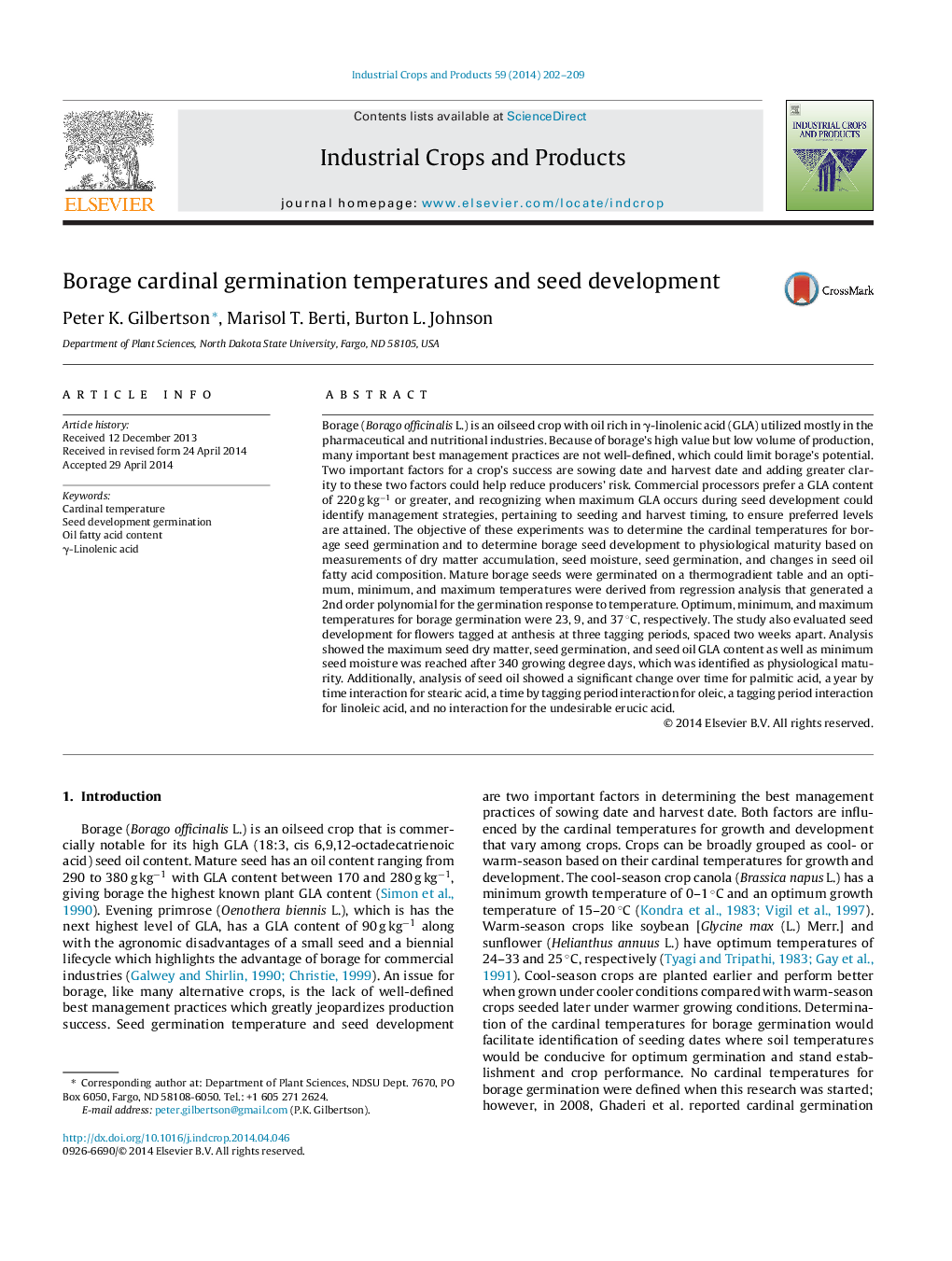| Article ID | Journal | Published Year | Pages | File Type |
|---|---|---|---|---|
| 6376559 | Industrial Crops and Products | 2014 | 8 Pages |
Abstract
Borage (Borago officinalis L.) is an oilseed crop with oil rich in γ-linolenic acid (GLA) utilized mostly in the pharmaceutical and nutritional industries. Because of borage's high value but low volume of production, many important best management practices are not well-defined, which could limit borage's potential. Two important factors for a crop's success are sowing date and harvest date and adding greater clarity to these two factors could help reduce producers' risk. Commercial processors prefer a GLA content of 220 g kgâ1 or greater, and recognizing when maximum GLA occurs during seed development could identify management strategies, pertaining to seeding and harvest timing, to ensure preferred levels are attained. The objective of these experiments was to determine the cardinal temperatures for borage seed germination and to determine borage seed development to physiological maturity based on measurements of dry matter accumulation, seed moisture, seed germination, and changes in seed oil fatty acid composition. Mature borage seeds were germinated on a thermogradient table and an optimum, minimum, and maximum temperatures were derived from regression analysis that generated a 2nd order polynomial for the germination response to temperature. Optimum, minimum, and maximum temperatures for borage germination were 23, 9, and 37 °C, respectively. The study also evaluated seed development for flowers tagged at anthesis at three tagging periods, spaced two weeks apart. Analysis showed the maximum seed dry matter, seed germination, and seed oil GLA content as well as minimum seed moisture was reached after 340 growing degree days, which was identified as physiological maturity. Additionally, analysis of seed oil showed a significant change over time for palmitic acid, a year by time interaction for stearic acid, a time by tagging period interaction for oleic, a tagging period interaction for linoleic acid, and no interaction for the undesirable erucic acid.
Keywords
Related Topics
Life Sciences
Agricultural and Biological Sciences
Agronomy and Crop Science
Authors
Peter K. Gilbertson, Marisol T. Berti, Burton L. Johnson,
